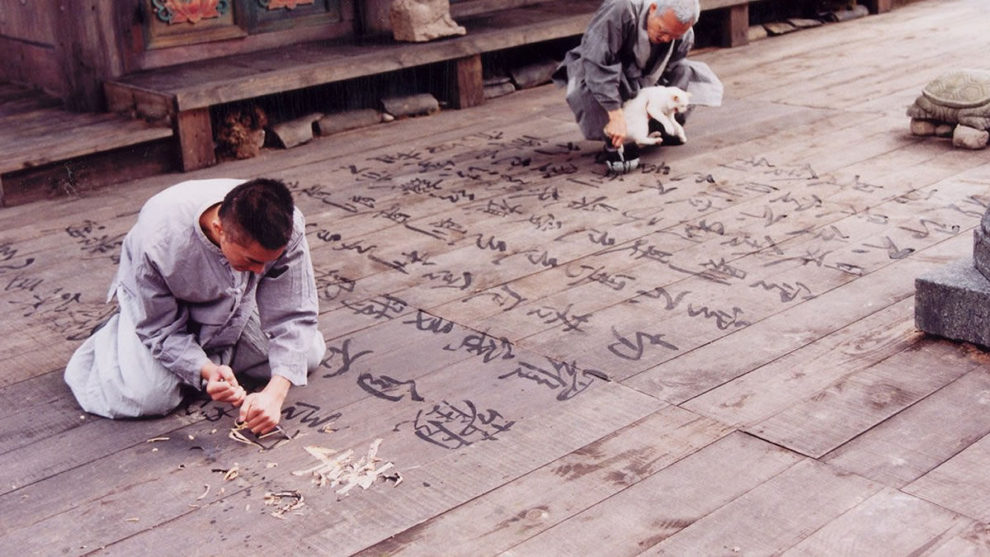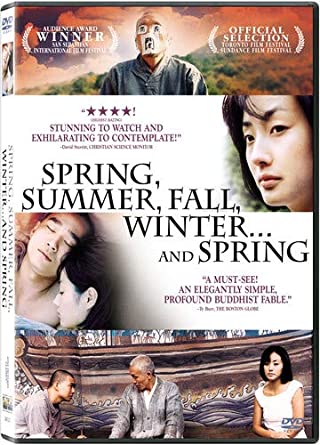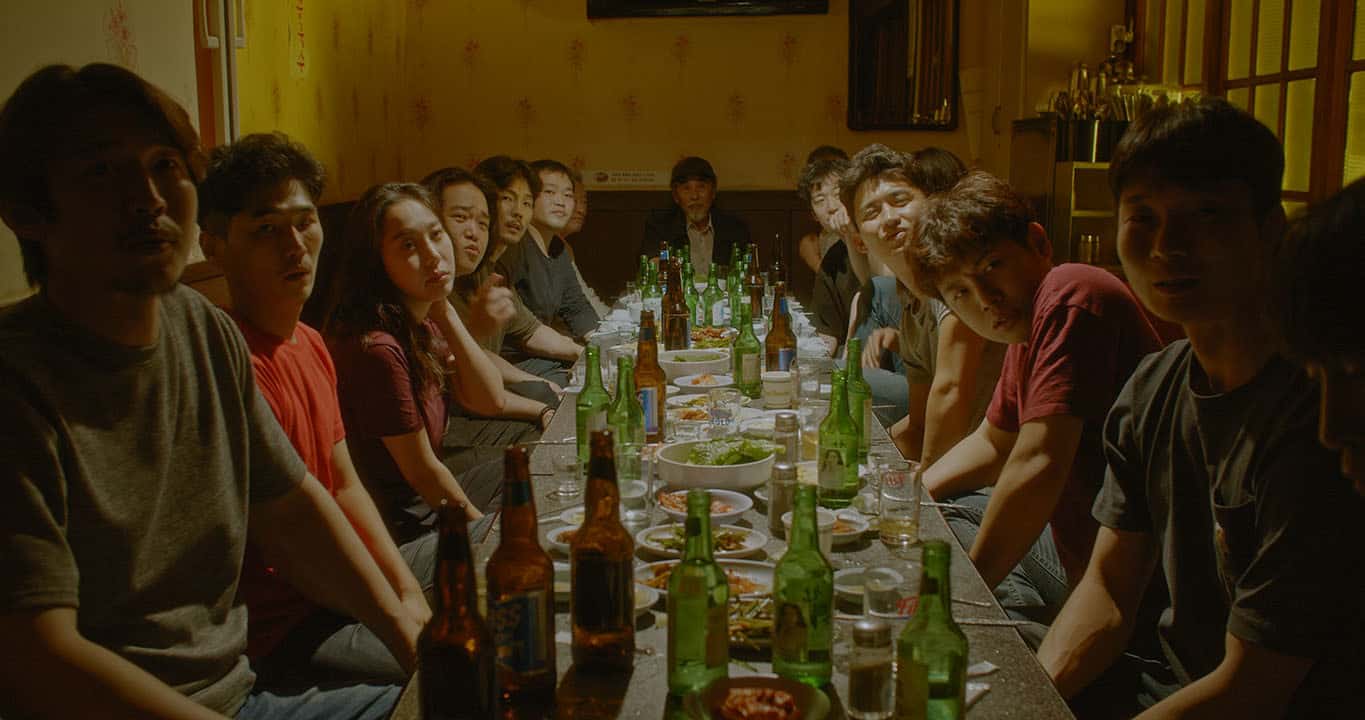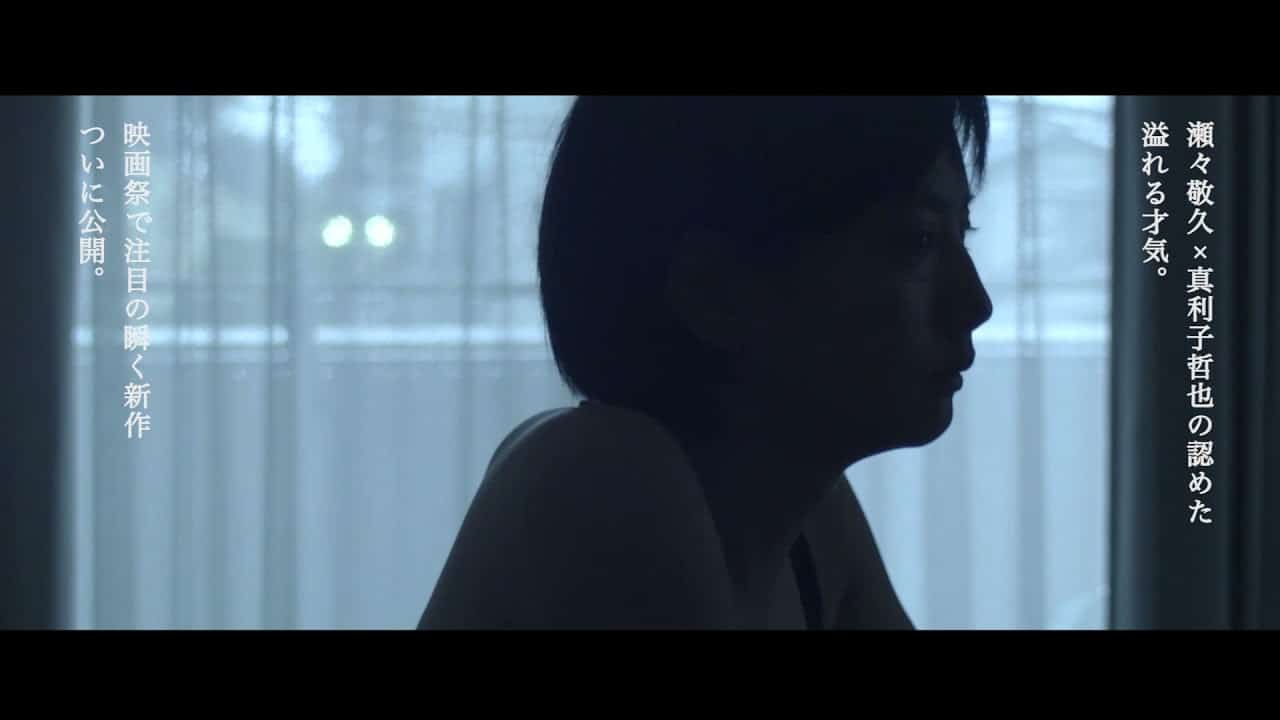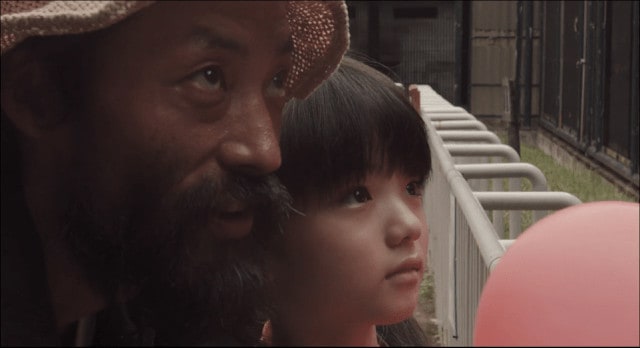Idiosyncratic Korean arthouse director Kim Ki-duk passed away on December 11, 2020 from complications caused by COVID-19, while he was in Latvia, having traveled there a month earlier. Though many of his films have received critical acclaim, “Spring, Summer, Fall, Winter… and Spring” is widely considered his crowning achievement and an essential piece of South Korean cinema.
Buy This Title
on Amazon by clicking on the image below
“Spring, Summer” tells the story of a young monk as he comes of age in a quiet, secluded monastery, drifting on a serene lake in the mountains. Guided by an older teacher (Oh Yoeng-su), the boy (Kim Jong-ho) lives a simple life, filled with long walks, prayer, meditation and picking herbs for medicine. It is not as idyllic as it seems, however. The boy takes great pleasure in torturing the small animals that populate the forest surrounding the floating monastery, tying rocks to them to make them immobile and laughing thoughtlessly as he watches them struggle. When his master sees this, he punishes the boy by tying a large rock on his back, ordering him to find the animals and untie them. The boy goes looking but finds two of the three animals dead. He cries bitterly, expressing remorse for his actions.
A few years later, when the young boy has grown into a teenager (Seo Jae-kyeong), a mother (Kim Jung-young) brings her sick teenage daughter (Ha Yeo-jin) to the monastery. The master agrees to take care of the ailing girl and the mother leaves her in his care. The young monk soon becomes attracted to her. When he gropes the girl's breast while she's asleep, she wakes up and slaps him. Feeling guilty, he prays incessantly, arousing the master's suspicion. The girl forgives the apprentice's transgression and eventually the two secretly begin a relationship, sneaking away into the woods to have sex. One morning, after having fallen asleep in the rowboat which connects the monastery to the surrounding forest, they are discovered by the master who warns his student that “lust leads to desire for possession, and possession leads to murder.” He tells the girl to leave, since she is now healthy. The young monk is shattered by her departure and runs away that night, to pursue her. However, tragic events will soon see him returning to the monastery once again.
Kim Ki-duk's 2003 drama is a departure from the grim studies of violence he is usually so preoccupied with. “Spring, Summer” is a serene film, a patient study of existence's eternal return, full of visual poetry and spiritual weight. Human darkness finds its way into the narrative as well, as our capacity for cruelty and violence is confronted head-on by the film. Not always borne of anger, it is nonetheless a common presence in the life of the young monk, something he must learn to let go of as he grows to be an old man himself.
The film is divided into five segments which correspond with the seasons in the title, underscoring the theme of eternal recurrence. The director himself has said that “[he] intended to portray the joy, anger, sorrow and pleasure of our lives through four seasons.” In each of the segments, we witness not just how these feelings come and go, but also how they intertwine. The promise of physical pleasures awakens something in the young apprentice, which leads to joy once his relationship with the girl is consummated. However, this also sets in motion a series of events that lead to a great deal of suffering, not just for him but also for his lover as well as his master.
The story is beautifully carried by the performances, as well as the assured direction, both of which let the scenes develop at their own pace, organically flowing from one moment to the next. Sparse in dialogue, “Spring, Summer” often relies on facial expressions and body language to communicate what's happening between its characters and it does so effortlessly. It is a moving, lightly melancholy film of duality: childhood harbors both innocence and cruelty, the monastery the monks cloister themselves in is both an Eden and a prison, a tool of death becomes a tool of repentance. Birth, life, death, rebirth. The ever-repeating cycle faced with astounding clarity and approaching something truly and profoundly transcendent. A remarkable achievement and a genuine classic of modern South Korean filmmaking.


